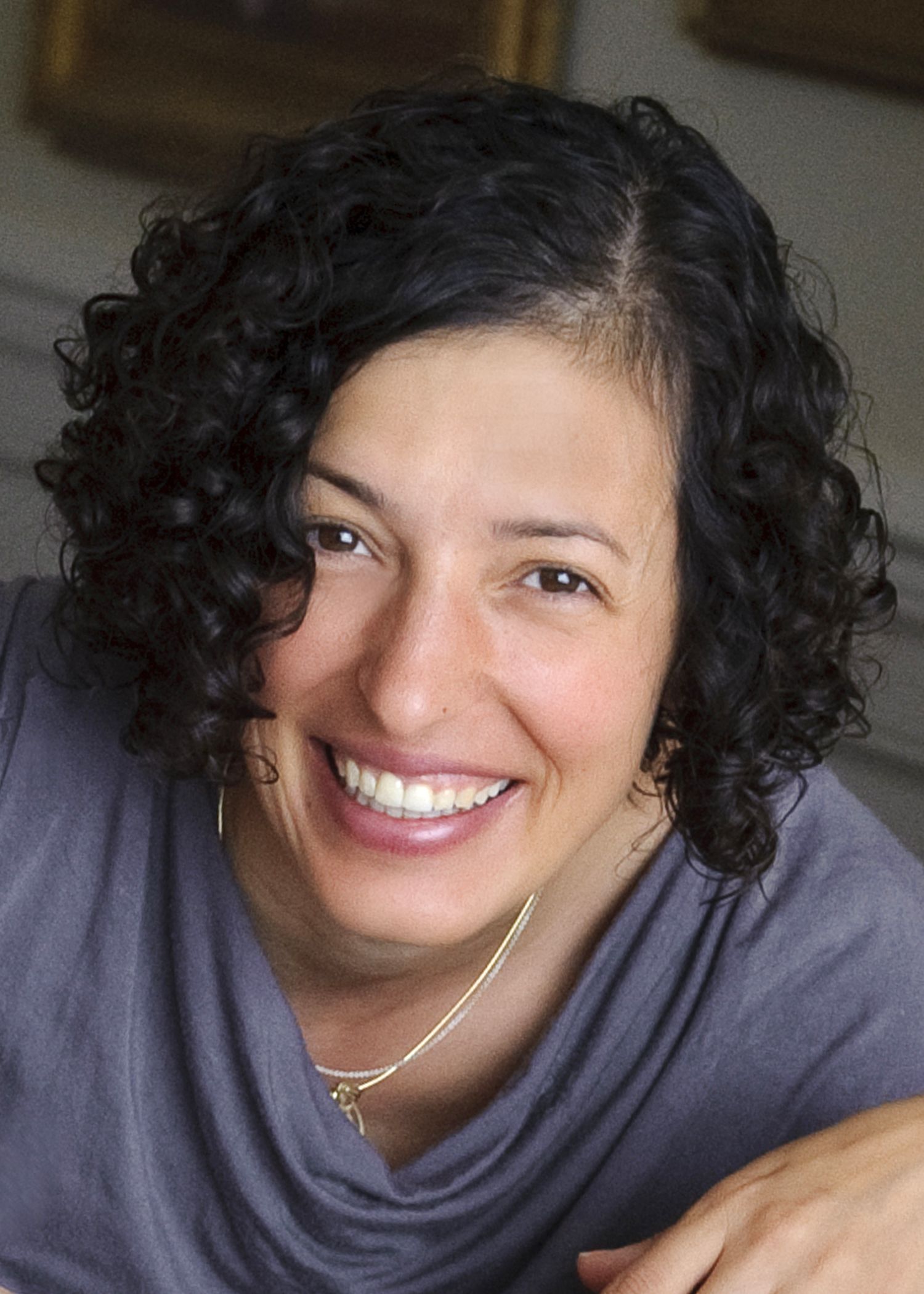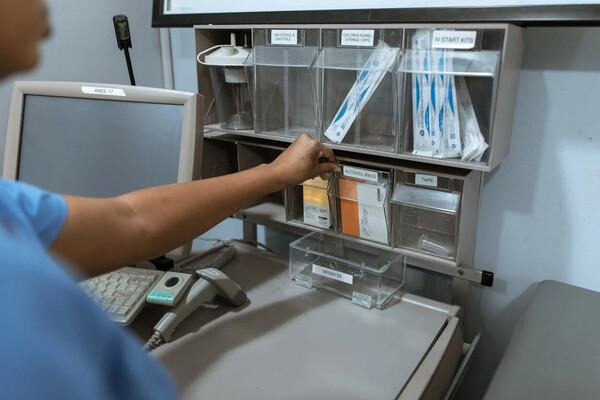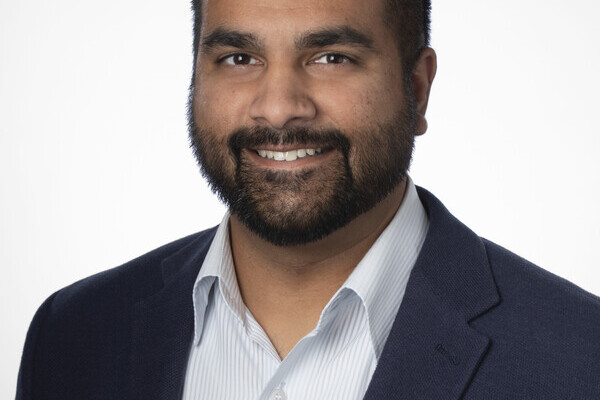Main Second Level Navigation
- Welcome
- Why Toronto?
- History of the Department
- Vision & Strategic Priorities
- Our Leadership
- Our Support Staff
- Location & Contact
- Departmental Committees
- Department of Medicine Prizes & Awards
- Department of Medicine Resident Awards
- Department of Medicine: Self-Study Report (2013 - 2018)
- Department of Medicine: Self-Study Report (2018 - 2023)
- Communication Resources
- News
- Events
Faces of U of T Medicine: Dr. Mona Loutfy

Claire Wiles
 Dr. Mona Loutfy is a professor and clinician scientist in the Department of Medicine’s Division of Infectious Diseases. She is the director of the Women and HIV Research Program at the Women’s College Research Institute and an advocate for access to and high quality of care for women living with HIV. Dr. Loutfy is currently leading the Canadian HIV Women’s Sexual and Reproductive Health Cohort Study, developed to address the unique care needs of women living with HIV, including reproductive health and breaking down the stigma of HIV.
Dr. Mona Loutfy is a professor and clinician scientist in the Department of Medicine’s Division of Infectious Diseases. She is the director of the Women and HIV Research Program at the Women’s College Research Institute and an advocate for access to and high quality of care for women living with HIV. Dr. Loutfy is currently leading the Canadian HIV Women’s Sexual and Reproductive Health Cohort Study, developed to address the unique care needs of women living with HIV, including reproductive health and breaking down the stigma of HIV.
Writer Claire Wiles sat down with Dr. Loutfy to discuss her research on women living with HIV in Canada, and how her training in the Department of Medicine’s Clinician Scientist Training Program impacted her research and approach to patient care.
What are some of the biggest challenges that women living with HIV face in Canada?
Probably the biggest challenges relate to HIV stigma. The general population doesn’t really understand HIV and how things have evolved so much since HIV was first identified in the early 1980s. The life expectancy for people who are HIV positive is now almost equivalent to the general population. They can have children who are HIV negative, and will live normal lives, but the general population doesn’t really understand that. There’s still fear and judgement, and it’s hard for people with HIV to live full and open lives. In particular, many women with HIV live in isolation and in poverty. High rates of post-traumatic stress, violence, depression and anxiety are also seen in women with HIV. And finally, the population of people with HIV is aging, and we don’t know what’s going to happen to these people as they age.
How has HIV research changed since you entered the field?
I entered medical school in 1991, and HIV was only discovered a decade earlier. When I started in the field they had just discovered the first treatment. When I was doing my residency, the wards were filled with dozens and dozens of people dying from HIV. In the 30 years that I’ve been studying HIV, it’s gone from a death sentence to people living normal, healthy lives. There’s still a battle, but the battle is different. Rather than just saving people’s lives, the battle right now is ending the stigma and trying to change the perception of HIV to the general population.
When did you discover your interest in HIV research?
In the 90s when I was working at the Wellesley Hospital. That’s where I really learned about HIV as a field where basic science, clinical care, social issues, public health issues and politics intersect, which makes it such a fascinating area to work in. It’s a true example of research being political, which makes it exciting and challenging. You will always be pushed and have naysayers, which you need to be prepared for to be an advocate and a researcher. The other thing that makes it different is that it’s very fast paced. The medications are always changing and the science is always changing.
What about the relationship between women and HIV interests you most?
In the 90s and early 2000s, most of the research on HIV was on men. Women were often excluded from the research. Now, globally, there has been a feminization of HIV, with over 50% of the population of people living with HIV being women. Due to biological and social reasons, women are at a higher risk of HIV. This was a major motivating factor for me to enter the field. I was also drawn to HIV research because I’m a believer in the rights of women and girls, and especially in reproductive rights.
How can pregnancy further compound challenges for people living with HIV?
The person who is pregnant will be referred to an obstetrician and gynecologist and will have to navigate through the hospital system, where HIV disclosure becomes an issue. There is also the risk that people who are pregnant and HIV positive face institutional stigma and stigma by health care providers. It’s not that uncommon that child protection agencies will become involved, and often the disease is used as a reason to apprehend the child, when it’s not actually a reason at all. This is an issue that is surprisingly common for racialized women.
You went through the Department of Medicine’s Clinician Scientist Training Program early in your career. What was your biggest takeaway from the program? How did it help shape your career as a clinician scientist?
The program had just started when I participated and it was very unique at the time. It defined what a clinician scientist is, which was really useful, and helped define what your training was as a clinician scientist. It allowed for interaction with more senior clinician scientists, and get advice from them.
As a clinician scientist, how has your research impacted your approach to patient care? How has your approach to patient care impacted your research?
All of my research topics are chosen because they’re important to my patients. It’s really bedside to bench research. The other way around, it’s helpful because I can actually quote my own research with my patients. I can reassure them that their experience is also the experience of many women who were involved in my research. It allows patients to see themselves in the data that I’m presenting, which can help them through their experience.
This is part of a series of profiles that feature trainees and graduates of the Department of Medicine’s Eliot Phillipson Clinician Scientist Training Program. Established in 1994, this competitive program enables MD specialists to pursue research as a major component of their career in academic medicine and become leading innovators in research.



